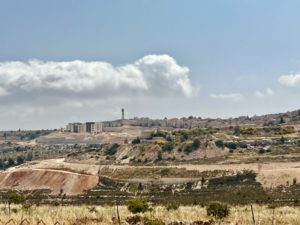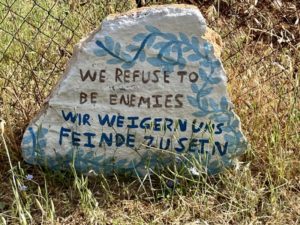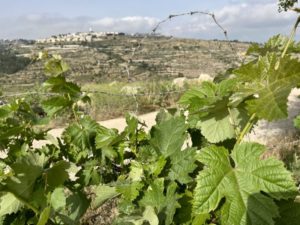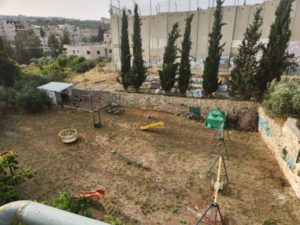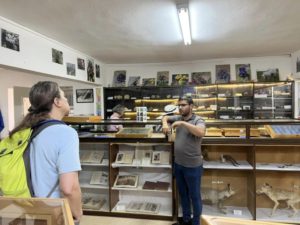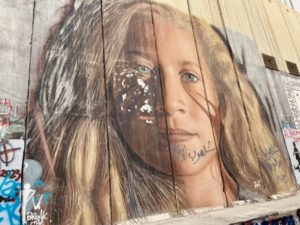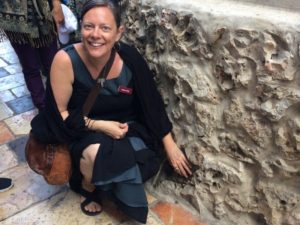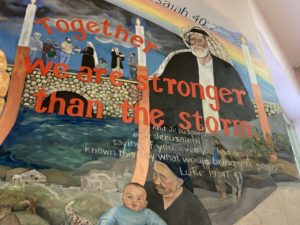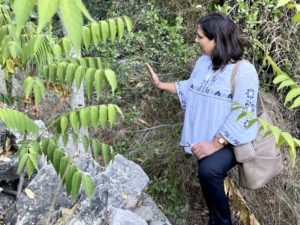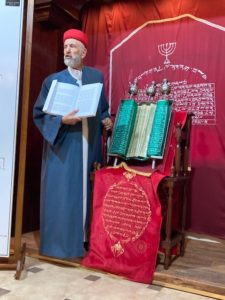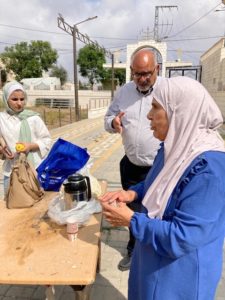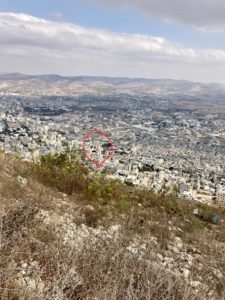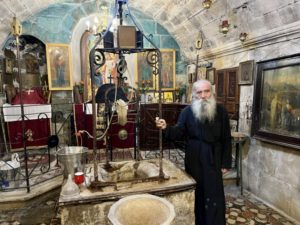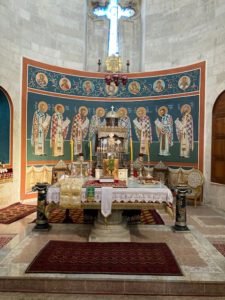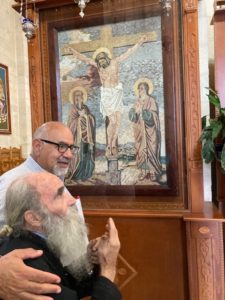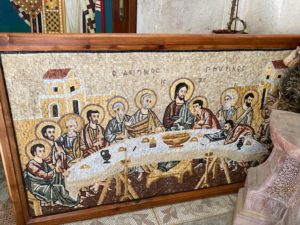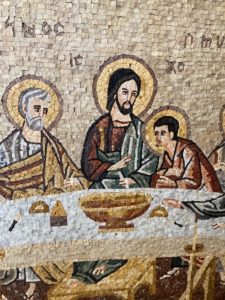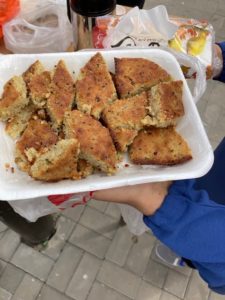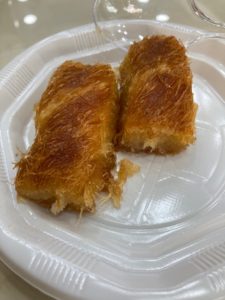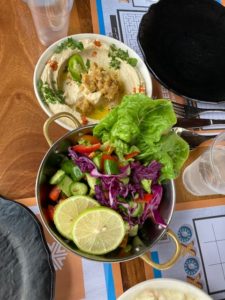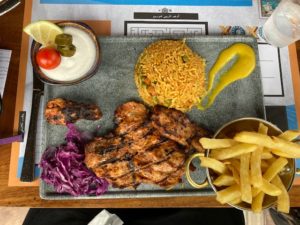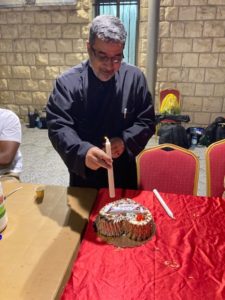Friday morning, both our bus driver, George, and our guide, Usama, came to the hotel to see us off as we checked out of the Holy Land Hotel and headed north for history, winding our way up and down through an agricultural area of olive and fig trees, even an occasional flock of sheep.
Samaritan High Priest with 2 Torahs (left) Salwa’s hospitality (right)
The Samaritan Museum at Mount Gerizim is not about The Good Samaritan! From museum founder and Samaritan priest Hosni Wasif we learned about the language and history of the Samaritan people, and why they worship on Mount Gerizim.
https://samaritanmuseum.com/about/Salwa, a friend of Brenda, met us there, bringing coffee and a wonderfully tasty homemade spice cake, heblah. She told us about her parent’s and her own story of living in refugee camps, including having Israeli soldiers spending 12 hours a day on their roof, using the water tank for the home as a trash can and urinal in 2000 during the 2nd Intifada. She earned degrees in education and taught elementary students in the camps until a few years ago.
Jacob’s Well from above (left) and Jacob’s Well with Father Justin (right)
With an elevation drop of about a thousand feet, our ears popped on the way down from a scenic overlook to the Greek Orthodox at Jacob’s Well. The well is very deep and is considered to be the well where Jesus met the Samaritan woman and talked about Living Water. Father Justin is a 90+ year-old fount of information and the artist of all the stunning icons and mosaics in the church!
Icons in Jacob’s Well Church in Nablus (left) and Zoughbi of Pilgrims of Ibillin Peace Partner Wi’am with Father Justin (right)
Last Supper mosaic made by Father Justin (left) and mosaic detail (right
Now a few words and photos of food today…
Heblah, morning hospitality (left) and Knafeh special dessert of Nablus (right) afternoon treat
salads (left) and lunch plate at Tangee restaurant in Nablus (right)
Father Firas Khoury Diab of the Melkite Orthodox Church in Zababdeh told of how he became a priest and of the difficulties in rebuilding the church and school in Zababdeh. He is not permitted to go the monthly meetings in Jerusalem. He is thankful for the support of international partners.
Birthday cake for Abuna Firas’s son. He used church candles!
Along with eating much and well today, we also saw how tahini is made from sesame seeds. Meals often begin with a variety of salads, hummus, yogurt, soft cheese, baba ghanoush, then comes the entree. A favorite entree to serve a large group is Maqluba “Upside-down” of seasoned rice with roasted carrots or cauliflower and chicken with a yogurt accompaniment. Dessert has not been served often after the meal but tonight we had birthday cake in honor of Elias, the son of Father Firas, our host. Then we went to our Palestinian host families, where we were offered coffee and desserts!
Mary Buchele
